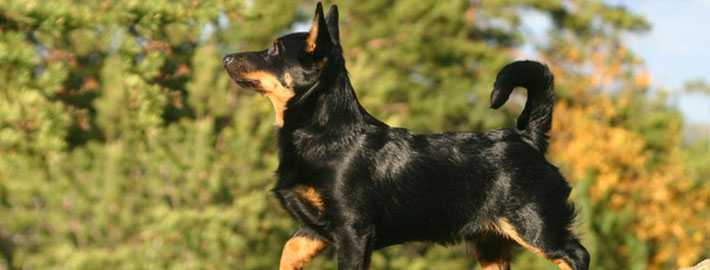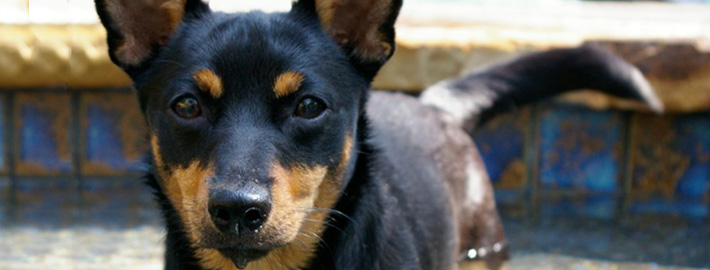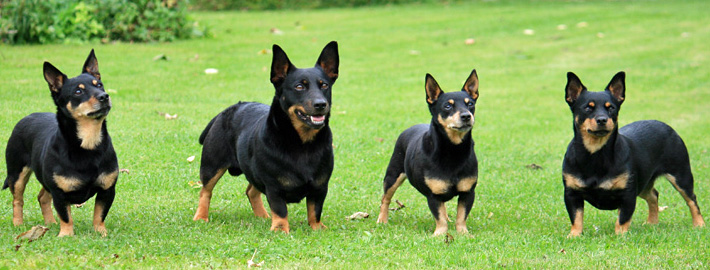What makes the Lancashire Heeler Unique?
The Lancashire Heeler is an alert and friendly dog that is wary of strangers. They are devoted to their owners and would take their job as the family watch dog to heart. They have a tendency to nip at people’s heels but this could be remedied with training. Though the Lancashire Heeler is somewhat resilient to training, with patience, you can achieve a lot.
Breed Groups
Page Contents
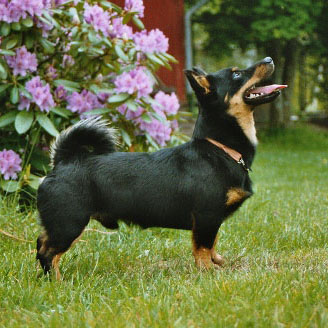
SnapShot
| Size: | Males – 25 to 31 cm (10 to 12 inches) Females – 25 to 31 cm (10 to 12 inches) |
| Weight: | Males – 3 to 6 kg (6 to 13 pounds) Females – 3 to 6 kg (6 to 13 pounds) |
| Origin: | The exact origin of breed is unknown. |
| Life Span: | 12 – 13 Years |
| Colour: | Black, and liver, with tan markings |
| Litter Size: | 2 to 5 puppies |
Is the Lancashire Heeler Right For You?
The Lancashire Heeler is a happy and fun loving dog. It has a unique skill that it can show its happiness through famous “Heeler Smile”. The dog is friendly and affectionate to its family. It is exceptionally playful, gentle and considerate towards children. Its friendly nature surfaces with its family and passer-bys but vanishes when an unknown person approaches its territory. The dog is aggressive towards strangers or intruders. It generally gets along well with other dogs and pets in the family.
In 5 Words
- Alert
- Intelligent
- Clever
- Energetic
- Playful
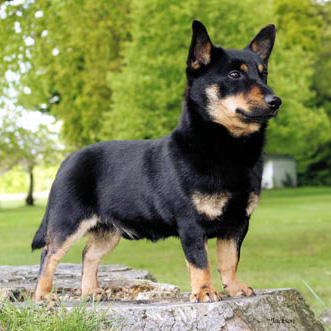
Characteristics
Learn About the Lancashire Heeler
Description
General Description
The Lancashire Heeler is set low to the ground; legs are short in relation to the rest of the body. It has wide-set larger ears. The ears should be erect; drop ears are undesired by breeders. The head is always in proportion with the body. The bright eyes are set wide apart. The legs are short and sturdy and the paws turn out slightly. The hindquarters are very well muscled. The chest is long and deep and the abdomen is firm. The back is strong. The tail is set high and carried forward over the back. The coat is seasonably long or short. In the wintertime the coat is plush with a visible mane and in the summer it has a sleek, shiny coat.
Size
The ideal height for a male Lancashire Heeler is 12 inches at the shoulder; for females, the ideal is 10 inches. They weigh approximately 14 pounds.
Coat
The Lancashire Heeler has a dense double coat, seen in a black and tan or a liver and tan coloring. he Lancashire Heeler sports a coarse, shiny coat that can be black or liver-colored, both with tan markings. They have a fine undercoat below a thick, weather-resistant topcoat. The coat is slightly longer around the neck.
Short History of the Lancashire Heelers
When people no longer greatly relied on cattle dogs, the Lancashire Heeler declined in numbers greatly to the point of practical extinction. Today’s Lancashire Heelers are a re-creation of the original Lancashire Heelers. The re-creation has lines of the Welsh Corgi and the Manchester Terrier. Today’s Lancashire Heelers are almost identical to the Lancashire that existed a long time ago. Although the new Lancashires retain the excellent ability to herd, they are now rarely used for cattle herding.
Temperament
It is alert, friendly, energetic, intelligent, playful and a pleasant companion. Personality can range from lazy and playful to energenic and talkative. It is actually a very strong dog that likes to participate in all kinds of activities, and can carry a ball or object the size of themselves. The Lancashire Heeler is friendly towards its owners and passers-by on the street but may be aggressive towards an unknown character on their territory, such as the Mail Carrier.
Caring for Your Lancashire Heeler
General Health
The Lancashire Heeler has a life expectancy of 12–15 years or more. The three most common serious conditions that can affect Heelers are Collie eye anomaly, Primary lens luxation and Persistent pupillary membranes. As well as these eye conditions, dogs of this breed may suffer from Patella luxation.
Grooming & Bathing
The Border Collie needs regular grooming, with extra attention given during times it is shedding. These dogs should be bathed only when necessary.
Exercise & Training
Widely regarded as one of the most intelligent breeds, Border Collies like to keep busy. These energetic dogs benefit greatly from regular physical exercise. They additionally excel in dog sports such as flyball and agility competitions. Border Collies will also do well in obedience classes, because they are smart and willing to please their owners.

